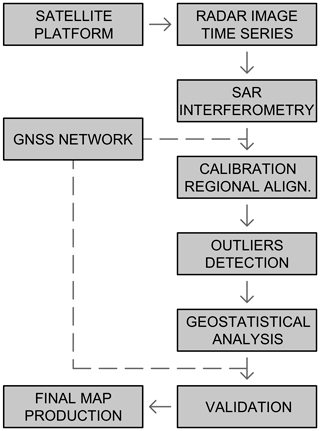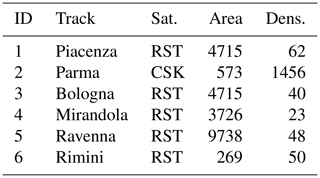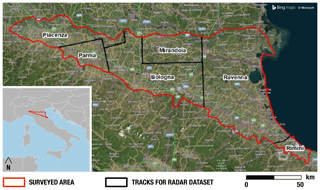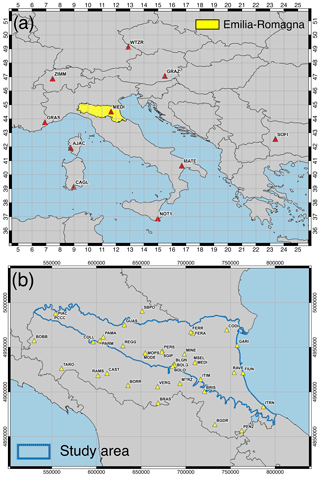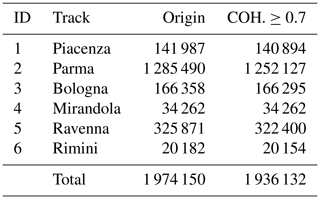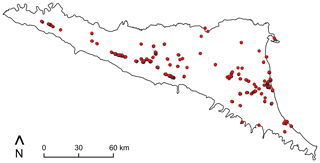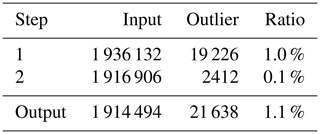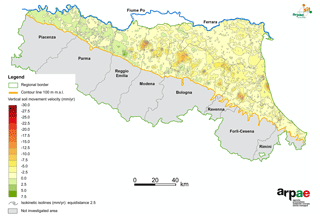Updating the subsidence map of Emilia-Romagna region (Italy) by integration of SAR interferometry and GNSS time series: the 2011–2016 period
The analysis of the vertical movements of the soil in the Po River plane of the Emilia-Romagna Region (Italy) was updated through an interferometric analysis referred to the 2011–2016 time-span. This activity is a continuation of previous studies on the state of knowledge of vertical soil movements in the same area, analyzed firstly by levelling and GNSS and more recently by SAR interferometry for the periods 1992–2000, 2002–2006, 2006–2011, on behalf of the Emilia-Romagna Region. The survey area analysed was approximately 13 300 km2, which corresponds to the territory of the regional plain. The interferometric dataset was calibrated through the use of velocity time series of several permanent GNSS stations. Among the 36 stations analysed, 22 were included in the study area: 16 were used for the calibration and 6 as check points). The velocities required for the calibration of the SAR analysis were calculated in the period following the important seismic events that struck the territory of the Emilia Romagna Region in May 2012. The interferometric analysis was carried out by TRE ALTAMIRA using the SqueeSAR™ technology. In particular, in order to update the interferometric dataset to 2016, it was necessary to perform a joint processing of the available RADARSAT-1 data and of the data acquired by the RADARSAT-2 satellite using a specific operating mode of the SqueeSAR™ algorithm known as stitching; this approach allowed the joint processing of images acquired in the same geometry by these two satellites. The study of the time series of the GNSS permanent stations used to provide the velocity datum to the interferometric analysis, is described, and the results of the SqueeSAR™ interferometric processing are reported. Statistical analyses on the spatial distribution and the type of scatterers have been performed during the screening and validation procedures of the dataset, and for the identification and removal of the outliers. Finally, the resulting map is described in order to analyse the measured soil movements with respect to the results obtained in past analyses, and the possible geological and human-induced causes, which could have produced them.





